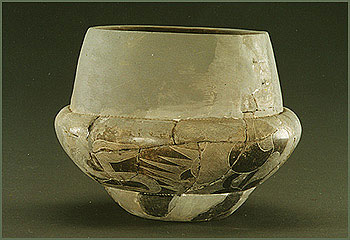| Tools: Save | Print | E-mail | Most Read |
| Zhaobaogou Culture |
| Adjust font size: |
The Zhaobaogou Culture succeeded the Xinglongwa Culture and originated in the middle and later period of the Xinglongwa Culture. The ancient cultural relics of the Zhaobaogou Culture are located in Aohan Banner, Chifeng City of Inner Mongolia.
The site cover an area of about 90 000 m2. The houses at the site are either square or of trapezium-shaped. They are semi-basements and arranged in rows. Compared to the Xinglongwa Culture, the settlements of the Zhaobaogou Culture were much larger. However, the two had much in common, for example, the arrangement of houses in rows and the different sizes of the houses. This affinity was attributable to shared regions, close technological levels, cultural heritage and other factors. However, the main factor was the close economic mode. The characteristic of Zhaobaogou's stoneware was the co-existence of ground stoneware and fine stoneware. The tools used to produce stoneware were mainly sharp-curved stone spades, flat stone axes, curve-edged stone knives, ground plates and ground sticks. It can be noticed that the Zhaobaogou Culture was more developed than the Xinglongwa Culture in terms of production tools. Pottery unearthed at the Zhaobaogou Culture site was mainly tan or mahogany with sand inclusions. They were all hand-made and simple, but more diversified in their shapes than those of the Xinglongwa Culture. Zun (a kind of ancient vessels for wine)-shaped ware is most typical of the Zhaobaogou Culture. It has small or straight mouths, long and thick necks, and flat and round bellies, with slightly curved bottoms. When it was polished, geometrical shapes were inscribed on it. Even the patterns of animals were cut into the bellies. Animals' heads were treated in both realistic and exaggerated ways to reflect the most noticeable part of the animal's organs. The pig-dragons, flying deer and magic birds patterns discovered at Xiaoshan made today's people marvel at the intricate designs. The zun with a pattern of a pig's head and a snake's body was the earliest example of dragon worship by the Chinese people, which shows that No venues for sacrifices were found so far at the Zhaobaobou Culture sites. Therefore, the activities might have been carried out indoors. The zun-shaped ware was used during sacrificial activities for wishing successful hunts. This indicated that hunting was an important part of the life of the ancient Zhaobaogou people. Their religious ceremonies were mostly related to hunting. The ancient Xinglongwa people used the skulls of animals for sacrifices, while the ancient Zhaobaogou people used pottery with the images of animals they hunted. The Zhaobaogou Culture was slightly younger than the Xinglongwa Culture, but older than the Hongshan Culture. It was one of the early cultures of the Neolithic Age. The three cultures were obviously in succession. The Zhaobaogou Culture and the Hongshan Culture shared many common aspects and the former was more developed than the Hongshan Culture. For example, the pig-dragon and a jade dragon with a pig's head and a snake's body must have a close connection and the pottery of both cultures have Z shapes printed on them. Therefore, the Zhaobaogou Culture should be an ancient culture that exerted a great influence on the development of the Hongshan Culture. |
| Tools: Save | Print | E-mail | Most Read |
 |
| Related Stories |
|
Product Directory China Search |
Country Search Hot Buys |
